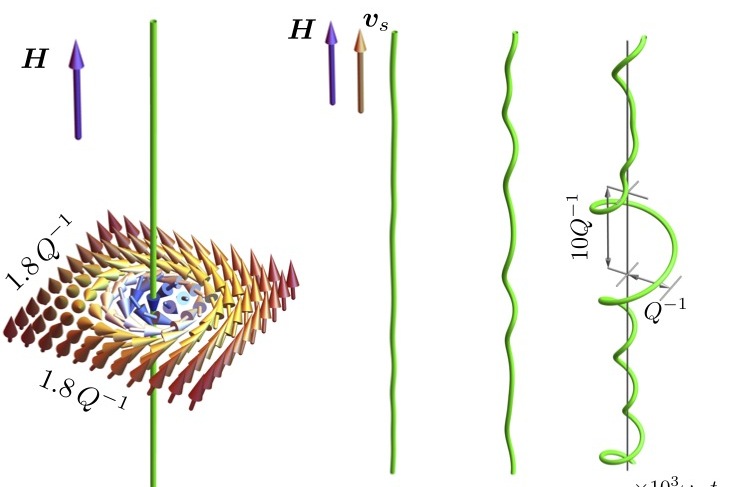Research: Spin currents destabilize skyrmion strings
More than ten years ago, Jonietz et al. Science 330, 1648 (2010) discovered that magnetic skyrmions – two-dimensional topological spin textures – can be manipulated by ultralow threshold currents of order 106 A/m2. This identified magnetic skyrmions as promising candidates for spintronic applications, and it triggered an intensive scientific activity. By now, the study of magnetic skyrmions and their interplay with spin currents matured, and it has become an active research field known as skyrmionics.
The original experiment was performed on three-dimensional bulk samples where two-dimensional skyrmion textures extend in the third direction forming skyrmion strings. When a spin current is applied perpendicular to the string, the whole string moves giving rise to the famous skyrmion Hall effect. Whereas the effect of a perpendicular current on the string motivated the whole research field and is by now well studied, the impact of a current flowing along the string was, surprisingly, not known until now. Researchers from our institute demonstrated theoretically that such a perpendicular current will be very detrimental to magnetic skyrmion strings. Remarkably, it will trigger a Goldstone spin wave instability whose amplitudes grow with time such that the strings are eventually destroyed. It is predicted that a longitudinal current in a clean system will induce a non-equilibrium phase transition and melt the skyrmion lattice. This instability provides, in particular, a simple mechanism to topologically unwind magnetic textures by currents.

